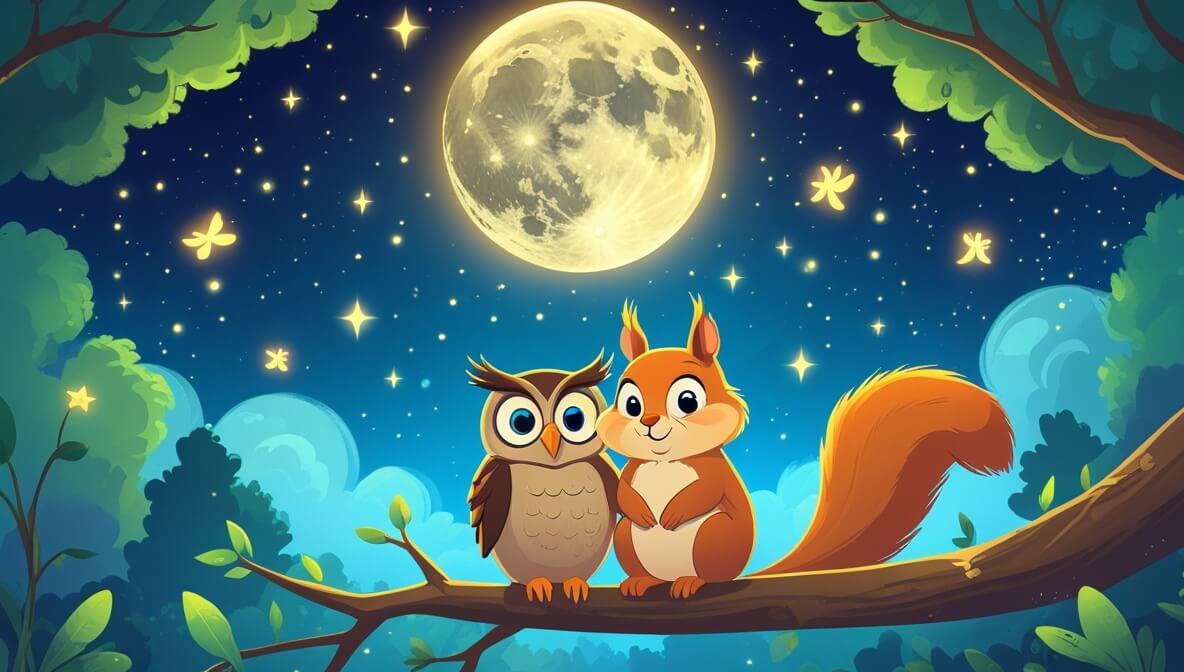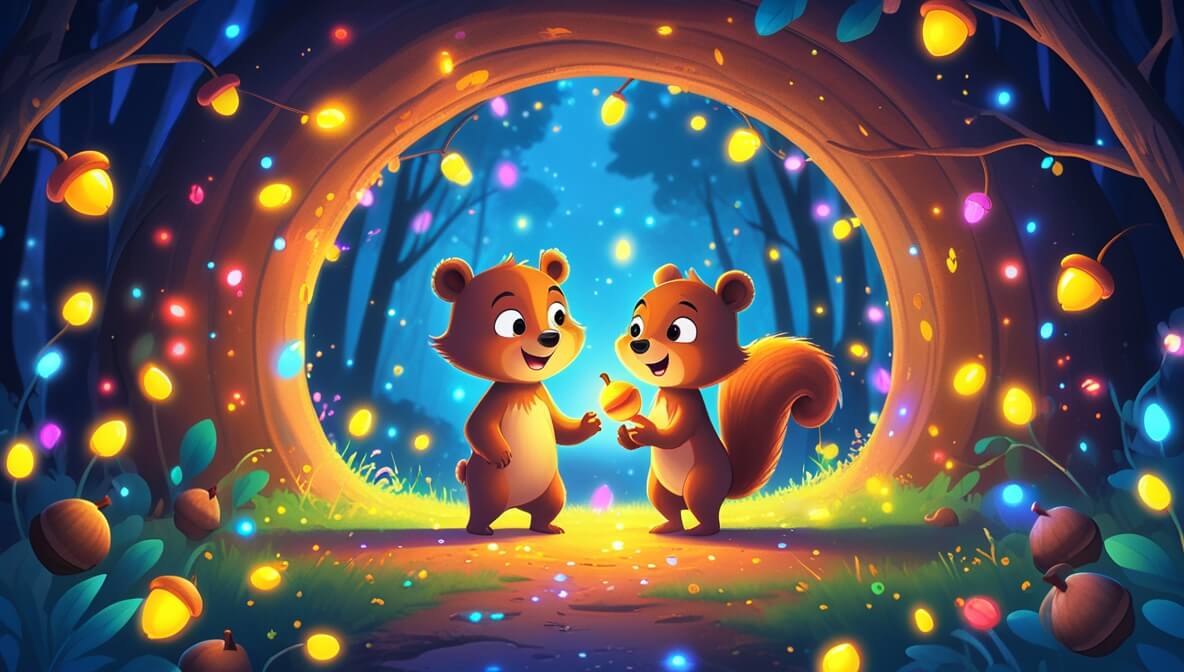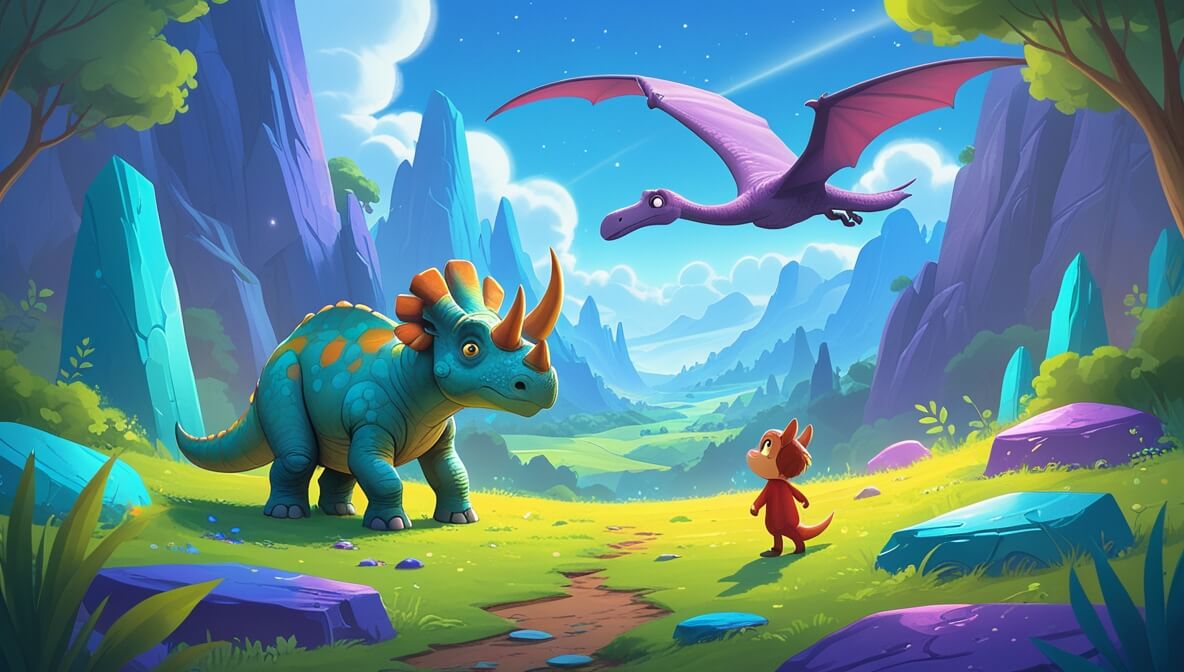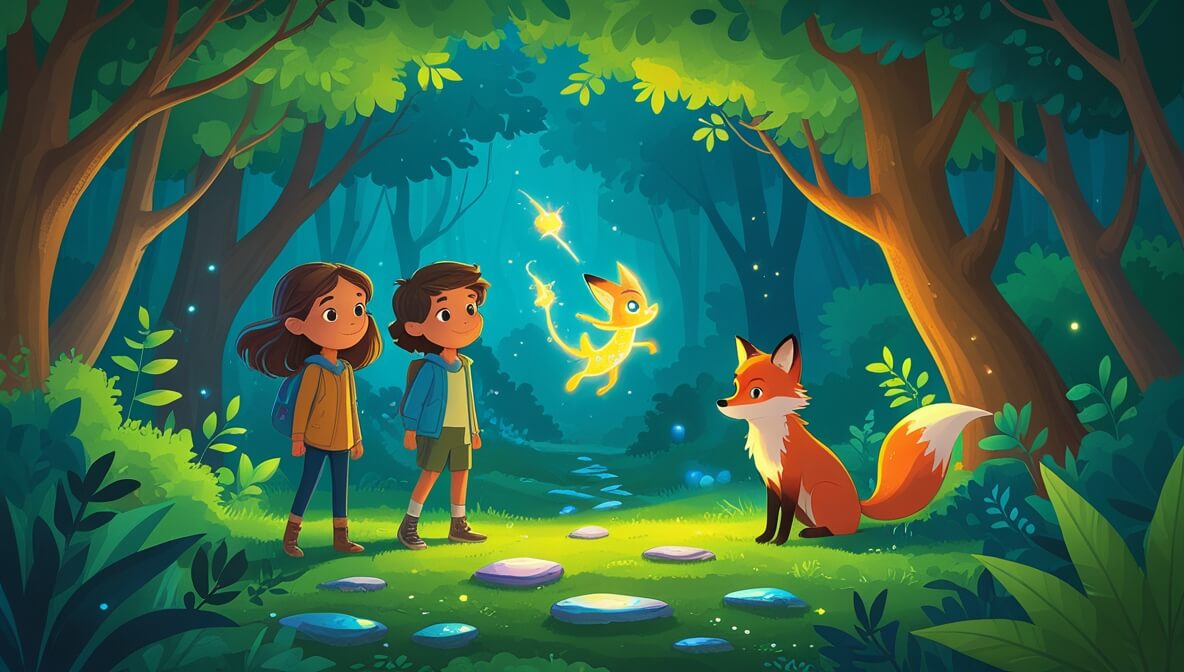A little owl and a tiny squirrel become friends under the moonlit sky, discovering the magic of nighttime wonders.
Age Recommendation
0 – 4 years
Characters
Characters:
- Ollie (a curious little owl)
- Squeaky (a playful tiny squirrel)
Story
Ollie the owl lived in a cozy nest high in the trees. Every night, he would open his big eyes and see the world painted in silver by the moon. One night, as he gazed down, he saw a tiny squirrel hopping eagerly on the branches. The squirrel’s name was Squeaky, and he loved to explore.
A Moonlit Meeting
Ollie hooted softly, “Hello, who are you?” Squeaky giggled and replied, “I’m Squeaky! I love the night just like you!” They both laughed, surprised at their shared love for the moonlit world.
Adventures in the Night
Ollie flapped his wings, inviting Squeaky to join him in a night adventure. Together, they soared above the treetops, feeling the cool breeze tickle their fur and feathers. Stars twinkled as they played hide and seek with the shadows.
A Surprise Under the Stars
As they settled on a branch, Squeaky spotted something sparkling below. It was a bunch of fireflies dancing in the air, creating a magical glow. Ollie and Squeaky watched in awe, feeling the magic of friendship surround them.
The end.
Moral of the Story
Friendship can light up the darkest nights and make every adventure more magical.
Questions to Think About
- Why do you think Ollie and Squeaky became friends?
- What did they discover together?
- How do you feel when you see the stars?
- What adventures would you have at night?
- Why is it nice to share moments with friends?
Do You Know
- Owls can turn their heads almost all the way around to look behind them!
- Fireflies light up to communicate with each other and attract friends.
Word Explorer
- Owl: A bird that stays awake at night and has big eyes.
- Squirrel: A small animal that likes to climb trees and eat nuts.
- Firefly: A bug that lights up at night like a tiny lamp.
Emotions in the Story
- Curiosity: When Ollie wanted to know who Squeaky was.
- Joy: When they played under the moon and stars.
- Wonder: When they saw the fireflies glowing beautifully.
Color Your Scene
Imagine Ollie and Squeaky sitting on a branch, with the bright moon above and twinkling stars around. Draw them watching the magical glow of the fireflies, using bright yellows and soft greens for a magical night scene.
Parents’ Corner
This story is a wonderful way to discuss with your child about:
Friendship: Talk about how Ollie and Squeaky became friends by sharing an adventure.
Exploration: Encourage your child to explore safely and discover new things about the world.
Magic of Nature: Explain the wonders of nighttime and how nature can be beautiful and full of surprises.
Appreciating Differences: Highlight how different creatures, like an owl and a squirrel, can become great friends.











